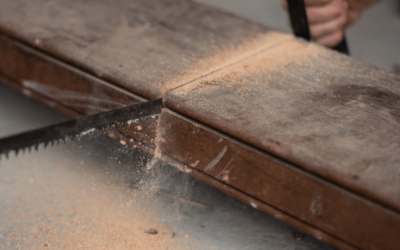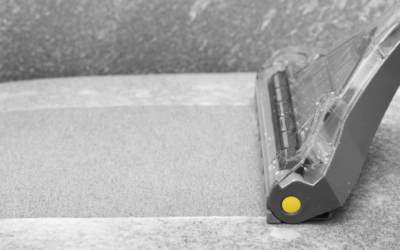Rugby is an exhilarating sport that demands both skill and safety. Among the essential gear, scrum caps play a crucial role in protecting players from head injuries during intense matches. Whether you’re a seasoned player or just starting out, choosing the right scrum cap can significantly impact your performance and safety on the field.
With numerous options available, finding the best scrum cap might seem daunting. Factors like fit, material, and comfort are vital to ensure maximum protection without compromising mobility. This guide will help you navigate through the top scrum caps on the market, so you can make an informed decision and keep your head in the game.
Top Amazon Sellers
Key Takeaways
- Importance of Scrum Caps: Scrum caps are essential for player safety in rugby, protecting against cuts, abrasions, and cauliflower ears during scrums and tackles.
- Selection Factors: Key factors to consider when choosing scrum caps include material, durability, fit, comfort, ventilation, and protection level.
- Comfort and Protection: The best scrum caps balance comfort and protection, featuring advanced padding and ergonomic designs to minimise injuries without causing discomfort.
- Durability Matters: Opt for scrum caps made from high-quality, durable materials like synthetic leathers and closed-cell foams to ensure longevity and reliability.
- Benefits and Drawbacks: While scrum caps provide essential protection and improve player confidence, they don’t significantly reduce concussion risk and may cause overheating or discomfort if not properly fitted.
- Personalised Choice: Assess your playing position and frequency to choose the best scrum cap, and compare different brands and models based on reviews and specifications.
Understanding Scrum Caps
Scrum caps serve as crucial protective gear in rugby. They help prevent head injuries and enhance player safety during matches.
What Are Scrum Caps and Why Are They Used?
Scrum caps are soft, padded helmets worn by rugby players. They protect against cuts, abrasions, and cauliflower ears during scrums and tackles.
Do They Prevent Concussions or Other Injuries?
Scrum caps reduce minor injuries like cuts but don’t significantly lower concussion risk. They’re essential for ear protection and minimising superficial head injuries during play.
Key Features to Consider
When selecting the best scrum caps, several factors ensure optimal performance and safety.
Material and Durability
Opting for durable, high-quality materials can extend the longevity of scrum caps. Synthetic leathers and closed-cell foams are commonly used for durability and impact resistance.
Fit and Comfort
A well-fitted scrum cap enhances comfort and prevents distractions. Adjustable straps and ergonomic designs help achieve a snug fit without causing discomfort.
Ventilation and Breathability
Effective ventilation prevents overheating during intense matches. Mesh panels and strategically placed ventilation holes improve airflow and comfort.
Protection Level
The primary aim of scrum caps is protection. Look for caps with thick padding around the ears and forehead to minimise risk of cuts and abrasions while playing.
Benefits and Drawbacks of Using Scrum Caps
Scrum caps provide essential protection for rugby players. They offer several advantages and some potential drawbacks:
Advantages
Scrum caps protect against cuts, abrasions, and cauliflower ears. They enhance player confidence by reducing minor head injuries. Scrum caps also contribute to comfort, improving focus during play. Their padded design minimises the risk of skin injuries during scrums and tackles.
Potential Disadvantages
Scrum caps don’t significantly reduce concussion risk, limiting their effectiveness for head trauma. They may cause overheating due to restricted ventilation, impacting player performance. Poorly fitted caps can lead to discomfort and distractions. Excessive padding might impede hearing, affecting on-field communication.
How to Choose the Best Scrum Cap for You
Selecting the best scrum cap involves considering multiple factors to ensure optimal protection and comfort.
Assessing Your Needs
Understanding individual requirements helps in choosing the best scrum cap. Determine the specific protection needs based on playing position and frequency of play. Forwards, for instance, might need thicker padding.
Comparing Different Brands and Models
Evaluating various brands and models is crucial for finding the best scrum cap. Look at user reviews and product specifications to weigh aspects like durability, comfort, and protection levels. Specific features, such as ventilation and fit, play significant roles.
Conclusion and Top Picks
Choosing the right scrum cap is essential for any rugby player aiming to enhance their safety and performance on the field. By considering factors like fit, material, and comfort, players can ensure they get the best protection against cuts, abrasions, and cauliflower ears. While scrum caps don’t significantly lower concussion risk, they play a crucial role in minimising superficial head injuries.
Evaluating different brands and models based on user reviews and product specifications can help players find the perfect balance of comfort, protection, and durability. Whether prioritising advanced padding, ergonomic designs, or durable materials, the right scrum cap can make a significant difference in a player’s game.
Frequently Asked Questions
How do I choose the right scrum cap?
Choosing the right scrum cap involves considering fit, material, and comfort. Ensure the cap fits snugly without being too tight and select durable materials like synthetic leathers and closed-cell foams for longevity. Comfort is crucial, so look for effective ventilation to prevent overheating during matches.
Are scrum caps effective for preventing concussions?
No, scrum caps do not significantly lower the risk of concussions. They are designed to protect against minor injuries such as cuts and abrasions and to prevent cauliflower ears but are not effective in preventing concussions.
Why do rugby players not always wear scrum caps?
Scrum caps are not mandatory in rugby, and opinions on their utility vary. Some believe they do not significantly reduce concussion risks, and others feel they could impact player performance. Personal preference and comfort often guide the decision.
Do scrum caps help reduce head injuries?
Yes, scrum caps help reduce head injuries like cuts, abrasions, and cauliflower ears. However, their effectiveness is limited to superficial injuries and does not extend to preventing more severe injuries like concussions.
Should all rugby players wear scrum caps?
While originally designed for forwards, scrum caps can benefit players in all positions. They offer protection from cuts and abrasions and can provide additional confidence and comfort during play, making them suitable for all players.
What materials are best for scrum caps?
The best scrum caps are made from durable, high-quality materials such as synthetic leathers and closed-cell foams. These materials ensure longevity, impact resistance, and overall better protection during matches.
How important is fit and comfort in a scrum cap?
Fit and comfort are crucial when selecting a scrum cap. A well-fitted cap enhances comfort, prevents distractions, and ensures the player can perform at their best without worrying about the cap slipping or causing discomfort during play.












